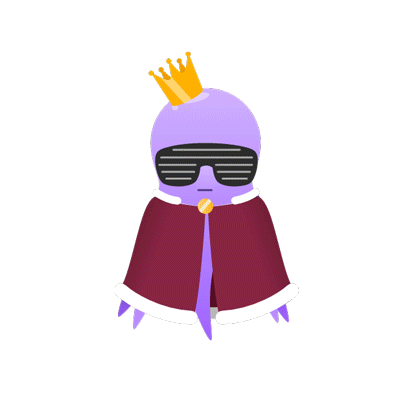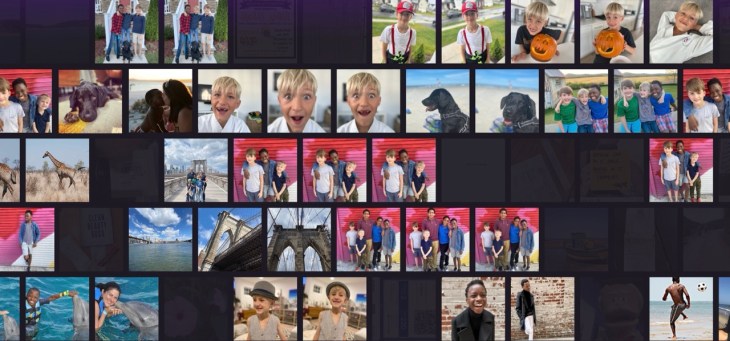AI-powered photo-sorting app GoodOnes raised $3.6 million in seed funding earlier this year and dropped into the Apple App Store in April. Six months and 400 million photo sorts later, it is changing its name to Ollie and having a bit of a relaunch. TechCrunch spoke to the newly named Ollie’s CEO and co-founder, Israel Shalom, to find out more about the name change and what they’ve learned since April.
The obvious place to start? The new name.
“Ollie is the name of our mascot, which was personifying the AI,” said Shalom. “And first of all, everybody loved it. It’s a cute little octopus that juggles all your photos and finds the best ones in there. Ollie personifies the AI. As we shifted more to the AI-driven direction, it made sense to align the brand directly with it as opposed to having GoodOnes and Ollie the octopus.”
GoodOnes started out as a way for people to easily sort through what Shalom calls the “photo mess,” identifying the photos and videos you’ll want to favorite, the photos that are worth keeping and anything that should head straight to the bin without passing Go. The idea is that it saves you the frustration of not being able to find the photos that are meaningful to you and saves you storage capacity, too.

No wonder GoodOnes renamed itself — Ollie is flippin’ adorable. Take a victory lap, Ollie! Image Credits: Ollie
The Ollie team reckons that its AI system can sift through and triage a week’s worth of your photos in under 60 seconds, which is faster than I can manage.
The version of Ollie that is shipped to your device is a generalized product but it’s specific to you and learns about your photos on the job. As Shalom explains it, every time you open Ollie, it sets out what it believes you’ll want to favorite and what you’ll want to mark as junk. If you agree, you click the button to accept the suggestion. If you disagree with Ollie’s recommendations, you can make adjustments to individual photos, and the AI will learn from it for now and in the future. As Ollie learns about you and your photo preferences, its accuracy increases significantly.
“We see for every individual user, the model changes and improves its accuracy over time,” said Shalom. “And it makes sense; different people have different preferences.”
While it was the seed funding that enabled the expansion of the engineering team that drove the shift toward using AI to help sort people’s photos between favorites, ones that you need to keep and those that really ought to be binned, Shalom explained that something else was also at play.
The general attitude toward AI has shifted quite radically over the past year, and people are now far more willing to see it as a valuable tool rather than something to be afraid of. “Initially, people were saying, ‘I’m just not comfortable trusting my photos with AI,’” said Shalom. “‘They’re a little too precious.’ And now it’s kind of expected: ‘Can’t AI do this for me?’”
As much as the general public might now recognize the strengths and benefits of machine learning and the heavy lifting that it can accomplish for them, Ollie is committed to not abusing their users’ trust when it comes to their photos.
“It really matters to people we found, and especially to people who have the photos of kiddos,” said Shalom. “It’s a value for us. And it’s forced us into different directions from a technological standpoint. I’m really glad I did that.”
As your version of Ollie is localized to your device and it learns from your photos, your photos never leave it. They aren’t transferred to the cloud, and nobody from the Ollie team has access to them. When I asked Shalom if this presents them with quality assurance problems, he said it does make it more complicated, but they’ve implemented systems to help them with it. There’s an easy bug reporting feature, and they have a customer success team member who talks with users. From there, they have created a database of problematic cases from which they can learn and tweak the algorithm.
While the app doesn’t share actual images with the team, it feeds back data about preferences to enable improvements and adjustments to the system. Intrigued, I asked if the Ollie team had been able to see which photos people preferred and what they would rather consign to the recycling bin. In other words, have they been able to determine what makes a “good photo”?
“We learned that it’s very, very personal,” said Shalom. “Some people think their food photos are junk. Some people think that their food photos are the best thing. Kids are like, you know, their kids’ photos are the most important thing.”
When I asked Shalom about the future for Ollie, he’s excited about how much more the AI program will be able to learn and how many more people they can assist in sorting their photos.
“The photo mess is real and remains unsolved,” said Shalom.
Ollie is available to download today, for free, from the Apple App Store. Over the next few months, the company plans to start charging for its services on a subscription basis, likely at $39.99 per year.
